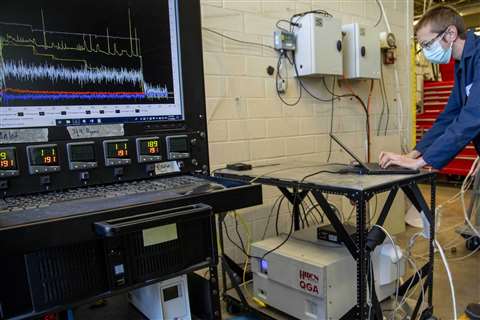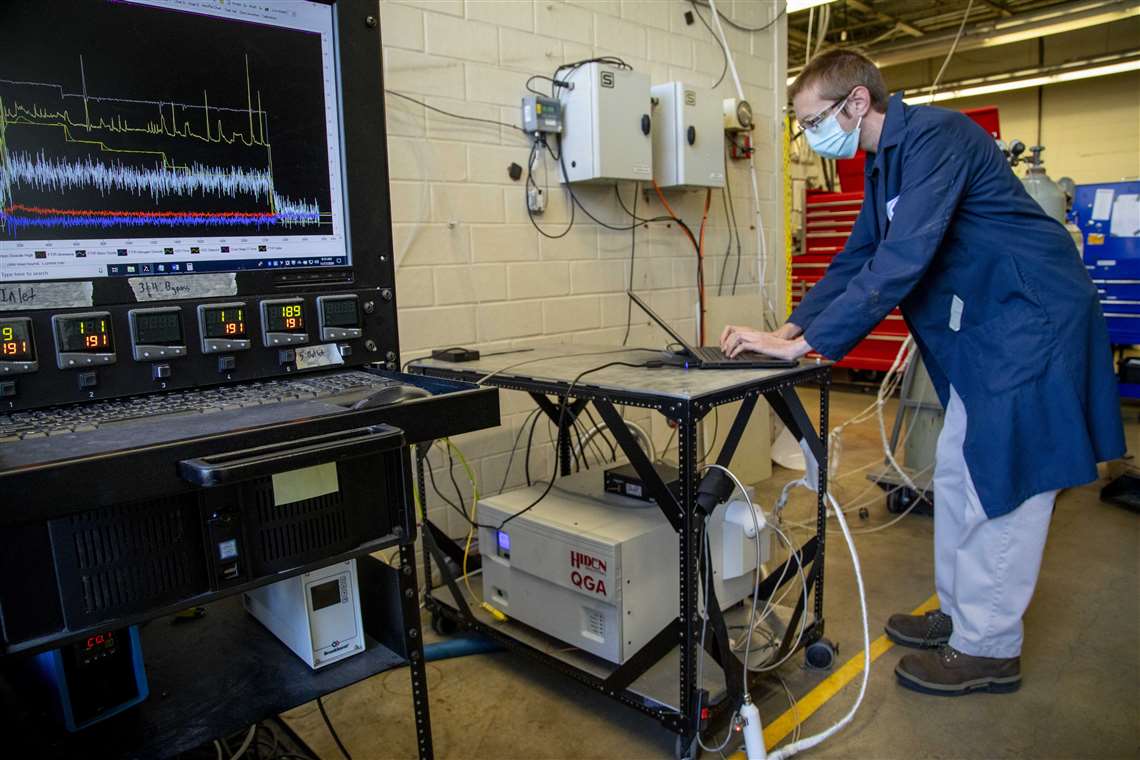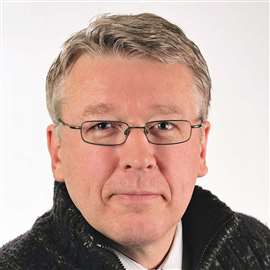
Mass spectrometer enhances SwRI’s catalyst testing
06 January 2021
New instrument detects emissions invisible to other equipment in real time
Southwest Research Institute (SwRI) has expanded its capability to evaluate internal combustion engine aftertreatment catalysts, integrating its existing technology with a mass spectrometer. To meet emission regulations, engine manufacturers install aftertreatment systems to treat exhaust and reduce harmful pollutants escaping into the environment. Aftertreatment system components undergo stringent testing to ensure they effectively decrease pollutants. SwRI said it is bolstering the testing process by incorporating a mass spectrometer, enabling a broader range of aftertreatment performance evaluations in real time.
 Southwest Research Institute researchers combined the organization’s USGR system with a mass spectrometer for more precise evaluation of aftertreatment system emissions. The merger of the two technologies produces high-quality data in real time, allowing accurate and swift measurement of a broad range of pollutants and gases.
Southwest Research Institute researchers combined the organization’s USGR system with a mass spectrometer for more precise evaluation of aftertreatment system emissions. The merger of the two technologies produces high-quality data in real time, allowing accurate and swift measurement of a broad range of pollutants and gases.
A mass spectrometer identifies a molecule by analyzing its mass-to-charge ratio, detecting chemicals invisible to other instruments. Researchers added the mass spectrometer to SwRI’s Universal Synthetic Gas Reactor (USGR), a catalyst performance testing solution that incorporates a Fourier Transform Infrared (FTIR) spectrometer, which uses IR radiation to identify and quantify molecules present in a gas sample. Different chemical structures absorb light at specific wavelengths, producing unique spectral fingerprints. The combination of technologies provides simultaneous FTIR and mass spectrometry data, allowing accurate and rapid identification of exhaust stream components.
“We integrated a mass spectrometer with the USGR system to overcome the limitations of the FTIR spectrometer, which cannot monitor chemicals that are infrared inactive like dinitrogen, oxygen and hydrogen,” said Dr. Grant Seuser, a postdoctoral researcher in SwRI’s Powertrain Engineering Div. who led the project. “The mass spectrometer can detect a broader range of exhaust components, allowing a more complete picture of aftertreatment system performance.”
The FTIR monitors pollutants, while the mass spectrometer detects hydrogen, oxygen and dinitrogen formation, providing data to build comprehensive scientific models of the catalyst. The merger of the technologies enables testing of three-way catalysts in real time.
“Real-time information is important,” Seuser said. “Emission regulations are based on the total amount of pollution emitted. When we are testing equipment that controls emissions, we not only need to know how much pollution is leaving the tail pipe, but also exactly when it is emitted. Real-time monitoring helps us identify problems faster.”
The integration of a mass spectrometer with the USGR system has widened the scope of testing possibilities beyond aftertreatment systems, said SwRI. Other uses include measuring engine emissions directly, monitoring chemical processes, environmental monitoring, battery testing and much more. The San Antonio, Texas, organization offers the specialized evaluation and development services to a range of clients, including engine, vehicle and catalyst manufacturers.
STAY CONNECTED




Receive the information you need when you need it through our world-leading magazines, newsletters and daily briefings.
POWER SOURCING GUIDE
The trusted reference and buyer’s guide for 83 years
The original “desktop search engine,” guiding nearly 10,000 users in more than 90 countries it is the primary reference for specifications and details on all the components that go into engine systems.
Visit Now
CONNECT WITH THE TEAM









